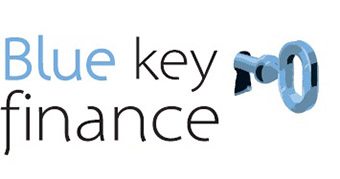Busting the myths on bankruptcy: what you can and can’t do
Redundancy, bereavement, investments gone bad, failed businesses, a divorce, sickness or being a carer can leave people struggling to pay the bills.
Often, it is honest, hardworking people who have fallen on bad luck that can lead them to accumulate large debts, not the myth of irresponsible spending that many think is the root cause.
Being in debt can be a lonely and stressful experience. So what are some of the possible options?
Do nothing
Doing nothing is an option but without making double or triple payments on your excess credit card debts, you may be servicing the debt balance for decades.
Weigh up the pros and cons of how to trade your way out versus filing for bankruptcy, which would mean clearing the debt, perhaps paying an amount from your income and being credit impaired for five years before moving onto a fresh start.
File for hardship
Financial hardship policies vary from lender to lender, but they usually span between three to twelve months and may involve a temporary payment holiday, interest-only payments and reduced or token payments.
Hardship aims to resolve temporary financial problems like short-term unemployment.
The idea is that once the hardship period ends you go back to paying your debt as per your original contract. This is intended to be a short-term solution, so if your situation is otherwise terminal, hardship will only delay you having to deal with the problem.
Debt consolidation
If your debts are over $100,000 and you have no assets, you may be past the point of being able to restructure the debt through any kind of unsecured lending.
However, if you can leverage against property you already own, have sufficient equity and meet other lending criteria such as serviceability, then you may be able to restructure your credit card debts and other debts into your mortgage.
Debt agreement
This is a binding arrangement between you and your financier to repay your provable unsecured debts.
Under a debt agreement you agree to repay an amount to your creditors over a set period of time, usually from three to five years.
The repayment amount is based on what you can reasonably afford to pay and the majority of your creditors (in dollar value) will need to agree to your proposal for this option to come into effect.
Due to the eligibility criteria surrounding unsecured debts, a debt agreement isn’t likely to be an option for those with unsecured debts exceeding $114,478.
Bankruptcy
If these options aren’t viable for you, then bankruptcy may be worth considering. So what are the pros and cons to consider?
How income is treated
It’s a common misconception that if you’re bankrupt you can’t earn over a certain amount. In reality, you’re able to earn as much as you like. But once you earn over the relevant income threshold, you’ll need to contribute a portion of your earnings towards your bankrupt estate.
Income payments are calculated using a statutory formula set out in the Bankruptcy Act. The formula dictates that 50% of your net assessable income above the relevant dependent threshold is payable to your estate.
As an example, if you’re earning $85,000 gross taxable per year and have no dependents, your income during bankruptcy may be assessed whereby your income contributions in bankruptcy may be around $286 each month.*
*Note these figures do not include child support payable, FBT and salary sacrifice which can impact net assessable income in bankruptcy. These figures are a guideline only. Income contributions payable are subject to actual earnings and the formal assessment will take place after the date of bankruptcy.
How assets are treated

Provisions in the Bankruptcy Act protect certain assets and not others. Protected assets typically include superannuation, general household contents and furniture, some compensation or life insurance payments, tools used to maintain employment worth up to $3750, and vehicle assets used primarily for transport worth up to $7900.
For vehicles under finance, the $7900 threshold applies to any positive equity (the difference between the value of the car and the pay-out figure owing on the loan).
Vehicles under finance may have a negative equity position (i.e. the car is worth less than the amount owing on the loan) so in this situation, you can ordinarily continue making car loan repayments in order to hang onto the car.
Assets that fall into the unprotected category can include things like shares, antiques, artwork, cryptocurrency, copyrights, boats and jet skis – to name a few. Some of the most significant unprotected assets people tend to own include residential or investment properties.
Once you become bankrupt, your interest in unprotected assets such as property vest in your bankruptcy trustee, meaning that your share of the asset comes into his or her ownership.
The trustee’s job is to realise the value of your interest in the vested property, which is typically achieved by selling it. The proceeds of the sale are then made available to your bankrupt estate for the purpose of dividing it among your creditors.
In some cases, the trustee may agree to relinquish their interest in unprotected assets to a non-bankrupt third party (such as a co-owner) at market value. Once that transaction is complete, the unprotected property will no longer be an asset of your bankrupt estate.
Let’s say that you co-owned a property with your partner worth around $440,000 with a mortgage of around $400,000. The total equity position would be $40,000 and assuming you were both equal owners – you’d each own half or $20,000.
Upon becoming bankrupt, your share of the property would belong to your bankruptcy trustee and the trustee will be looking to realise that $20,000 in monetary terms.
The non-bankrupt co-owner could make an offer of around $20,000 to the trustee in exchange for them relinquishing their current and future interest in the property. This removes the property from your bankrupt estate – which will prevent the trustee from selling it on the open market now or in the future.
In this scenario, mortgage contracts, strata, council rates, water rates and any other secured amounts owing against the property will need to be maintained.
Property and bankruptcy is complex, so if you’re considering bankruptcy and own any real estate, seek advice from qualified professionals who can take you through how those assets might be treated and what your options are.
Records of your bankruptcy

As with debt agreements, your bankruptcy will be recorded permanently on the National Personal Insolvency Index (NPII) and your credit rating will show a bankruptcy listing for five years.
Obtaining credit during the five-year credit-listing period will be difficult and, in some cases, impossible. The practical and immediate implications of this are often relative to your capacity to borrow before becoming bankrupt.
Your credit report is as good as your ability to borrow. If you were already maxed-out and over-extended before filing for bankruptcy, it’s highly unlikely that you would have had the capacity to take on more debt.
Running a business
While you’re bankrupt, you’re generally unable to be the director of an ASIC-listed company and any shareholdings in companies you own will also become assets of your bankrupt estate.
You may have options to carry on business as a sole trader or as a partnership (provided the partnership is created after the date of bankruptcy) but be mindful that there are additional rules regarding how much credit you can apply for without disclosing your bankruptcy.
You’ll also need to trade under your own name if operating under a sole trader or partnership ABN.
Employment
It pays to conduct some independent research on your part before you file for bankruptcy.
While there’s nothing in the Bankruptcy Act that specifically prevents you from working in any particular occupation, there are some professions where bankruptcy may impact your role, such as certain limitations imposed by the professional associations or licensing authorities of particular trades or professions.
If you’re thinking about bankruptcy and hold any professional memberships or licences, contact the relevant body to confirm whether there is any effect on your membership or ability to practice your trade.
You could likewise review your employment contract (as well as any other regulations which govern your employment) to see if bankruptcy will affect your job.
If you do find clauses in your contract about being “bankrupt”, “insolvent under administration” or “committing an act of bankruptcy”, your best bet is to have a confidential discussion with your immediate manager or HR to help you definitively determine whether bankruptcy will prevent you from continuing in your current role.
An insolvency clause within your employment contract doesn’t mean you’ll automatically lose your job. In a lot of cases, people with such clauses have been able to continue on in their roles after discussing the situation with their employer.
SMSFs and bankruptcy
You’re unable to be a member of any SMSF while bankrupt. For those who own property within an SMSF structure, it has become increasingly difficult to hang onto such investments, particularly if there is a mortgage owing against it.
For some complying SMSF property owners, it may be possible to utilise a Small Apra Fund (SAF) during the bankruptcy period. Similar to an SMSF, an SAF is run by a professional licensed trustee who is accountable for all its legislative, compliance and administrative responsibilities.
Usually, this option is only available if your existing fund is complying and your SMSF property is unencumbered with no mortgage owing against it.
For SMSF property owners with no choice but to sell, the proceeds can be rolled into an industry or retail super fund, which may or may not align with your long-term superannuation goals. That’s why it’s important to seek independent advice from a licensed financial planner.
Overseas travel
During the term of your bankruptcy, you’ll need to obtain permission from your trustee to travel overseas.
The approval of your travel application will ordinarily depend on whether you’re meeting your obligations in bankruptcy and doing the right thing such as keeping payments up to date or co-operating with your administrator.




Leave a Reply
Want to join the discussion?Feel free to contribute!